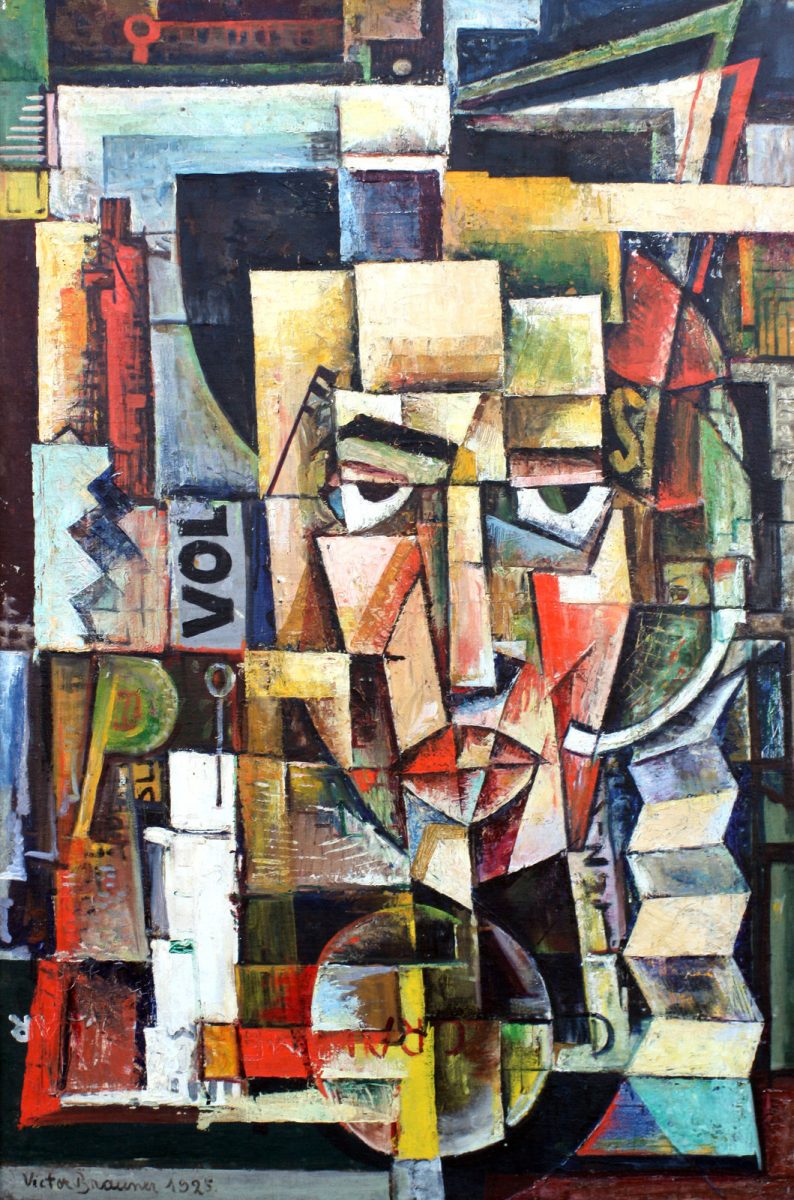
In the early decades of the 20th century, among the avant-garde artists in Romania, the Jews constituted the majority. Most of them regularly travelled abroad to study and work, mainly in France and Germany, and contributed to avant-garde movements there. Moreover, they organized several events that introduced modernist art to the Romanian public. For example, the exhibition organized by Iosif Iser in November 1907, in Bucharest, in which he displayed his works together with works by Andre Derain and other noted French artists, and the "Arthur Segal Exhibition of Modern Art" which opened in Bucharest in March 1910, and is considered to be" the first modern art exhibition" in Romania.
The reason for the large number of Jewish artists in avant-garde circles is probably rooted in the complex relationship with the Romanian culture, and the affinity of Jews to revolutionary modernism. The Jews, more than any other ethnic minority, were, in the eyes of Romanian nationalists, a threat to the unity of the nation. In his book Naţionalitatea in arta (Nationality in Art,1908) A.C. Cuza, considered the father of antisemitism in Romania, argued that art must be related to nationality, and foreigners cannot express the true nature of Romanian culture. For Cuza, those foreigners were mainly Jews, who were "an inferior ethnic group" of a different race, incapable of assimilation. Most intellectuals at the time adopted his notion that only Romanians by blood could be true Romanian artists.
Evidently, under these circumstances, it was difficult for Jewish artists to identify with the culture which rejected them, and on the other hand, the universalism and cosmopolitanism of the avant-garde attracted them. Thus, among the avant-garde artists in Romania, the Jews constituted the majority, and the most prominent among them were Marcel Iancu, Arthur Segal, M.H. Maxy, and Victor Brauner. They looked for an art in which their ethnic identity created no obstacles, and their credo: "We strongly reject the false tradition of the soil and bow to the endless tradition of man. The first is conservatism, the second is civilization" was published in an editorial in the avant-garde journal Integral edited by Maxy, and issued between 1925-1928. In this sense, their Judaism, paved their way towards revolutionary modernism.
During the 1920's, a wave of artistic innovation began in Romania, as Jewish artists connected with artistic movements protesting against a society that did not grant Jews civil rights. Marcel Iancu, who returned from Zurich in 1921, Maxy who returned from Berlin in 1923, and Brauner worked together to revive the art scene. The avant-garde periodical Contimporanul (Contemporary) edited by Ion Vinea and Iancu was first published in 1922. In 1924, Iancu and Maxy organized the First International Art Exhibition of Contimporanul in Bucharest, one of the largest avant-garde exhibitions at that time. In October 1924, when the HP75 magazine was published by Brauner and Voronka, the literary critic Eugen Lovinescu defined it as "a pure Jewish enterprise" and "the most avant-garde experimental publication in Romania."
A second wave of avant-garde artists in Romania centered on unu (one), a new magazine of Surrealist origin first published in by Sașa Pană in 1928. These artistic movements brought together many artists, the majority of which were Jews. Victor Brauner published his woks in unu, and gradually abandoned Dada and Constructivism for Surrealism. In the 1930s, Iancu and Maxy distanced themselves from radical new tendencies. Iancu broke with the Dada movement and returned to a figurative expressionist style, and Maxy turned to a style close to Socialist Realism.
In the 1930s, a young generation of Jewish artists appeared on the scene, including Jules Perahim and Paul Păun. In 1930, the sixteen year old Perahim debuted in the Surrealist magazine unu, and that same year, he and the fifteen-year-old Paul Păun, together with three other friends founded the avant-garde magazine Alge (Algae). The group received their cultural inspiration from Dada and Surrealism. In 1939, Păun was among the founders of the Surrealist Group in Bucharest.
Amelia Pavel, Pictori Evrei din Romania, Jewish Painters in Romania 1848-1948, Bucharest, 1996
Monica Enache, Valentina Iancu, Destine la Rascruce- Artiști evrei un perioada Holocaustului,
Catalogue of the exhibition held at the Bucharest Muzeul National de Arta, Oct.11, 2010-Feb.13, 2011
Radu Stern, "Why so many Jews?" in Dada to Surrealism, Exhibition catalogue, The Jewish Historical Museum, Amsterdam, 2011